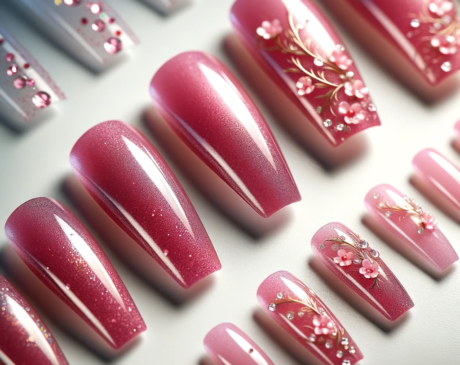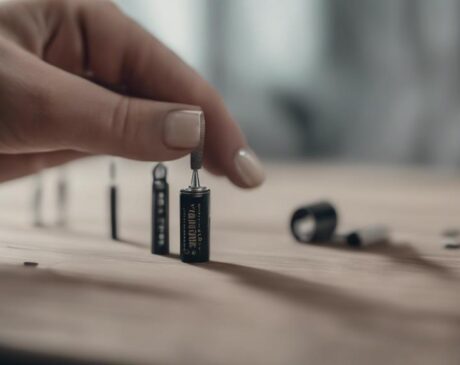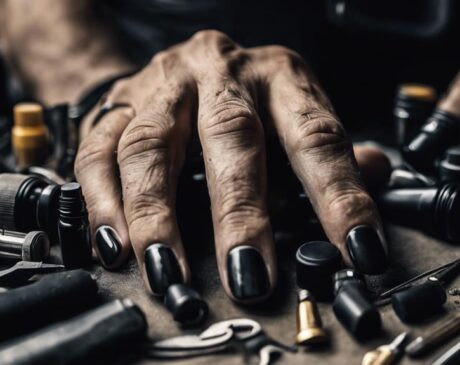Why Do My Fake Nails Hurt When I Press on Them?
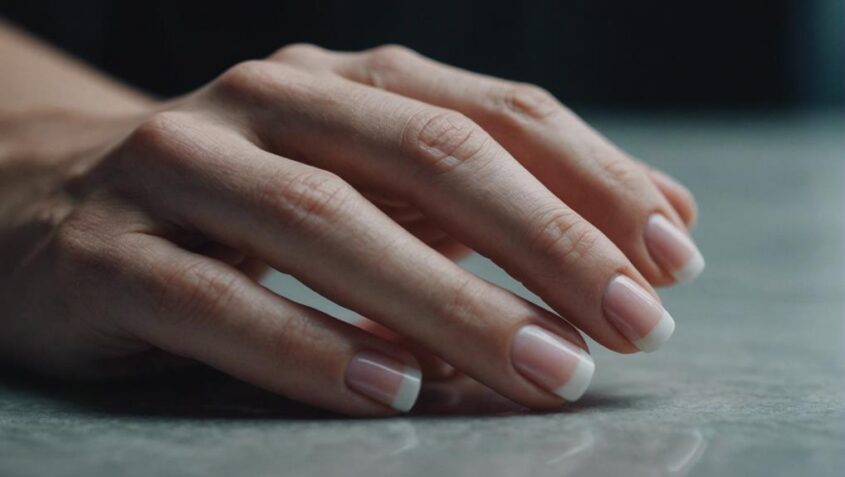
Fake nails may hurt when pressed due to factors like nail bed pressure, incorrect sizing, glue sensitivity, nail lifting, thickness, and shape. This discomfort can stem from added weight and thickness impacting the nail bed, choosing the wrong size leading to pain and potential damage, or sensitivity to the adhesive causing skin reactions. Addressing these issues through proper fitting, understanding pressure distribution, and nail care can enhance comfort. Exploring the influencing factors can lead to better understanding and improved fake nail experience.
Key Takeaways
- Nail bed pressure can cause discomfort when pressing on fake nails due to added weight and thickness.
- Incorrect nail size selection can lead to pain when pressing on nails, emphasizing the importance of proper fit.
- Glue sensitivity may result in pain when pressing on fake nails, requiring awareness of potential skin reactions.
- Nail lifting can cause discomfort when pressing on nails, indicating the need for professional handling.
- Nail thickness influences pain when pressing on fake nails, with innovations improving comfort and durability.
Nail Bed Pressure
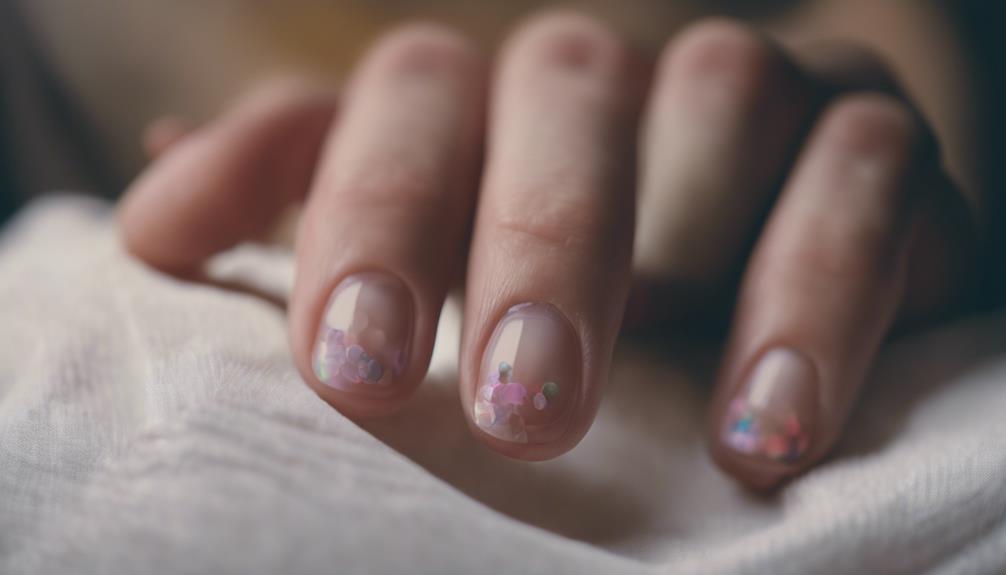
The sensation of discomfort experienced when wearing fake nails is primarily attributed to the pressure they exert on the nail bed. Fake nails, while enhancing aesthetics, can sometimes lead to pain and discomfort due to the added weight and thickness that can strain the delicate nail bed. This pressure can cause aching, soreness, and even throbbing sensations, particularly if the nails are applied too tightly or are excessively long.
To address this issue, innovative nail technicians and beauty companies are continuously exploring new materials and techniques to reduce the pressure on the nail bed while maintaining durability and style. From lightweight acrylic polymers to flexible gel nail extensions, advancements in fake nail technology aim to provide a more comfortable and natural-feeling experience for wearers. Additionally, proper application by trained professionals who consider the individual's nail shape and size can help alleviate discomfort caused by excessive pressure on the nail bed. By embracing innovation and prioritizing comfort, the nail industry is evolving to cater to the needs of individuals seeking both beauty and comfort in their artificial nail enhancements.
Incorrect Nail Size
When selecting fake nails, ensuring the correct size is crucial to prevent discomfort and potential nail damage. Incorrectly sized fake nails can lead to pain and sensitivity when pressure is applied. Nails that are too small may cause the natural nail to be exposed at the edges, leading to irritation and potential infections. On the other hand, nails that are too large can put undue pressure on the nail bed, leading to pain and discomfort.
To avoid these issues, it is important to carefully measure your natural nails and select fake nails that closely match the size and shape. Many brands offer a variety of sizes to choose from, allowing for a more customized fit. Additionally, considering the width of the nail is also important as nails that are too wide can press against the skin, causing discomfort.
Properly sized fake nails not only prevent discomfort but also contribute to a more natural and comfortable wearing experience. By paying attention to sizing, you can enjoy your fake nails without the pain and discomfort associated with incorrectly sized nails.
Glue Sensitivity
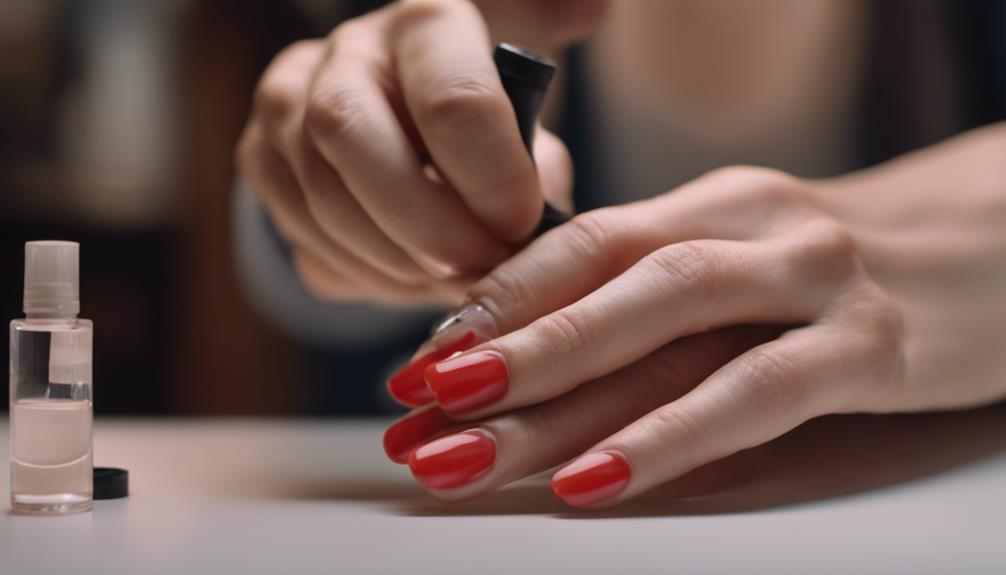
Glue sensitivity is a common concern for individuals who use fake nails. Symptoms of a glue allergy may include redness, itching, or swelling around the nail area. Understanding the causes of skin reactions and implementing prevention tips can help manage sensitivity issues effectively.
Glue Allergy Symptoms
Often overlooked by wearers, sensitivity to nail glue can manifest through a variety of uncomfortable symptoms. Individuals experiencing glue allergy may notice the following:
- Itching: A persistent and irritating sensation that can lead to scratching, causing further discomfort.
- Redness: The skin around the nails may become inflamed and appear red, indicating a reaction to the glue.
- Swelling: Some individuals may experience swelling in the nail bed or surrounding skin, making it painful to touch.
These symptoms can not only be bothersome but also indicate a potential allergic reaction that should not be ignored. If you suspect a glue allergy, seeking professional advice is recommended to prevent further discomfort or complications.
Skin Reaction Causes
Sensitivity to nail glue leading to skin reactions is often attributed to specific components within the adhesive formulation. Certain individuals may develop skin sensitivity or allergic reactions to ingredients commonly found in nail glues. The table below outlines some key components that can trigger skin reactions in sensitive individuals:
| Component | Potential Reaction |
|---|---|
| Formaldehyde | Irritation, redness |
| Toluene | Itching, swelling |
| Methacrylates | Rash, blistering |
| Dibutyl Phthalate | Peeling, burning |
| Ethyl Cyanoacrylate | Dermatitis, inflammation |
Understanding these components can help individuals identify potential triggers and seek alternative products to avoid skin reactions.
Prevention Tips for Sensitivity
Understanding the potential triggers and taking proactive measures can help individuals minimize the risk of experiencing skin reactions associated with fake nails. To prevent sensitivity related to glue used in fake nails, consider the following tips:
- Opt for Hypoallergenic Products: Choose glue labeled as hypoallergenic to reduce the chances of skin irritation.
- Perform Patch Tests: Before applying fake nails, conduct a patch test by applying a small amount of glue on your skin to check for any adverse reactions.
- Ensure Proper Ventilation: When applying fake nails, ensure the area is well-ventilated to prevent inhaling fumes that could trigger sensitivity.
Nail Lifting
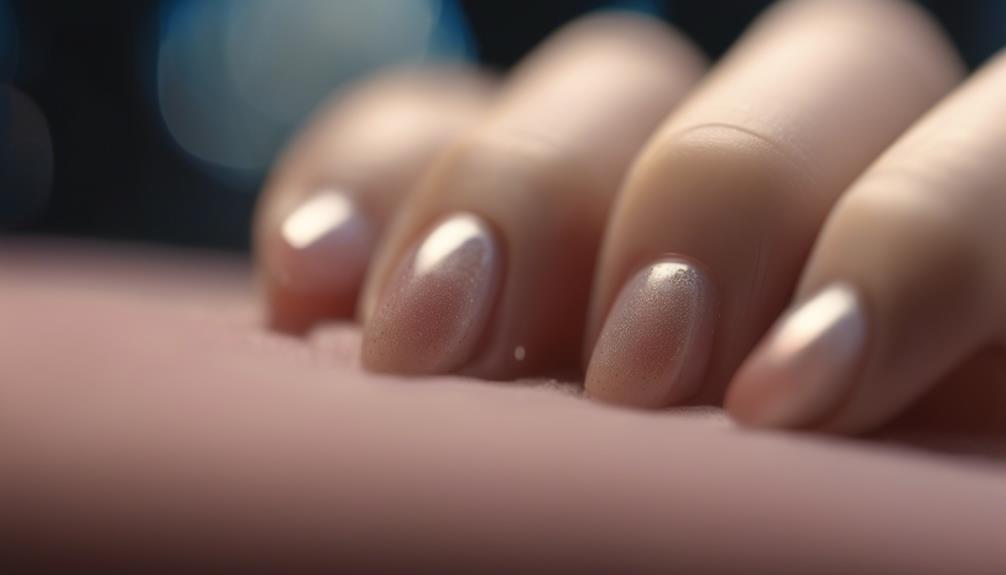
Nail lifting, also known as onycholysis, is a common condition that occurs when the nail separates from the nail bed, leading to potential pain and discomfort. This separation can be attributed to a variety of factors, including trauma, fungal infections, psoriasis, or using harsh chemicals on the nails. When the nail lifts, it creates a pocket between the nail and the nail bed, which can accumulate dirt and bacteria, potentially leading to further complications.
Innovative developments in nail care have introduced methods to address nail lifting. One approach involves incorporating antimicrobial properties into nail products to prevent infections in the lifted area. Additionally, advancements in nail extension techniques aim to minimize the risk of onycholysis by ensuring proper application and maintenance practices.
It is essential for individuals experiencing nail lifting to seek professional guidance to determine the underlying cause and appropriate treatment. Early intervention can help prevent further separation and discomfort, promoting healthier nail growth and overall nail integrity.
Nail Thickness
When assessing nail thickness, professionals consider various factors such as nail health, structural integrity, and potential underlying conditions. The thickness of your nails can impact how comfortable you feel with fake nails and can also affect their durability. Here are three key points to consider when thinking about nail thickness:
- Balance of Flexibility: The ideal nail thickness strikes a balance between being flexible enough to withstand daily activities without breaking easily, and being sturdy enough to support artificial enhancements like fake nails.
- Health Indicators: Nail thickness can serve as an indicator of your overall nail health. Thin, brittle nails may suggest nutritional deficiencies or underlying health issues, while excessively thick nails could be a sign of fungal infection or other medical conditions.
- Innovation in Nail Care: Advancements in nail care products and techniques are constantly evolving to address issues related to nail thickness. From strengthening treatments to specialized nail extensions, innovative solutions can help maintain optimal nail thickness and enhance overall nail health.
Nail Shape
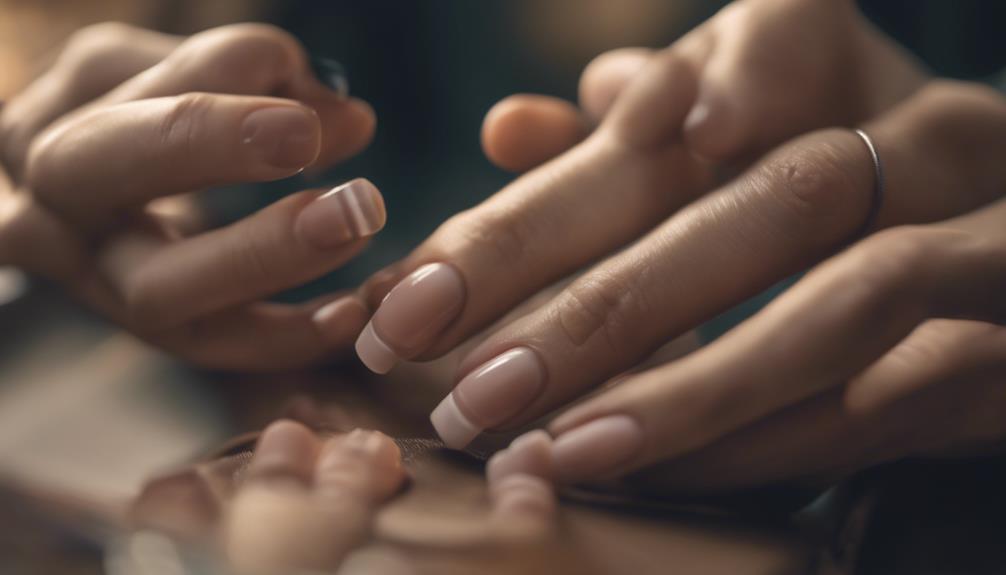
Nail shape plays a crucial role in the comfort and health of artificial nails. The length impacts how much stress the nail experiences, the distribution of pressure affects its durability, and the sensitivity of the nail bed can determine the level of discomfort. Understanding these points is essential in maintaining the well-being of your nails when opting for artificial enhancements.
Nail Length Impact
Long nails can significantly influence the comfort and functionality of fake nail applications. When considering the impact of nail length on fake nails, several key points should be noted:
- Aesthetic Appeal: Longer nails can provide a more elegant and sophisticated look, enhancing overall style and confidence.
- Practicality: However, excessively long nails may hinder daily activities such as typing, cooking, or even simple tasks like buttoning a shirt.
- Durability: Longer nails are more prone to breakage and damage, requiring extra care and maintenance to ensure longevity and prevent discomfort.
Pressure Distribution on Nails
The distribution of pressure on nails, influenced by their shape, plays a crucial role in determining the comfort and stability of fake nail application. Different nail shapes, such as square, round, almond, or stiletto, impact how pressure is distributed when force is applied. Square nails, with their flat edge, may distribute pressure more evenly, providing stability but potentially causing discomfort if too much force is exerted. Almond or oval-shaped nails concentrate pressure towards the center, offering a different sensation when pressed upon. Stiletto nails, known for their pointed tips, can create localized pressure points. Understanding how nail shape affects pressure distribution is key to achieving a balance between comfort and style in fake nail application.
Nail Bed Sensitivity
Sensitivity in the nail bed, influenced by the shape of the nails, can significantly impact the comfort and overall experience of wearing fake nails. Nail shape plays a crucial role in how pressure is distributed across the nail bed, affecting the level of discomfort experienced. Innovations in nail shapes have aimed to address these issues, providing solutions for enhanced comfort and reduced sensitivity. Embracing new nail shapes can revolutionize the fake nail experience, offering wearers a more pleasant and enjoyable sensation. By understanding the relationship between nail shape and sensitivity, individuals can make informed choices that prioritize both style and comfort. Explore the following to elevate your nail game:
- Ergonomically designed nail shapes for enhanced comfort.
- Customizable nail shapes tailored to individual preferences.
- Advanced materials and techniques to minimize pressure points.
Frequently Asked Questions
Can Fake Nails Cause Infections?
Fake nails can indeed lead to infections if not properly applied or maintained. Bacteria can thrive between the natural nail and the artificial one, causing discomfort and potential health risks. Regular hygiene practices are crucial.
How Long Do Fake Nails Last?
The longevity of artificial nails varies; factors like material quality, daily activities, and maintenance impact their durability. Typically lasting 2-3 weeks, with proper care, some can extend their stay up to a month.
Are Fake Nails Damaging to Natural Nails?
Wearing fake nails can potentially damage natural nails if not applied or removed properly. The use of strong adhesives or excessive filing can weaken the natural nail structure. Proper care and maintenance are essential to minimize damage.
Do Fake Nails Hinder Normal Nail Growth?
Fake nails can hinder normal nail growth by restricting oxygen flow and causing damage to the natural nails underneath. It's important to allow nails to breathe and recover between applications to maintain their health.
Can I Wear Fake Nails if I Have Allergies?
Individuals with allergies can still wear fake nails by opting for hypoallergenic alternatives. Materials like gel or silk can reduce the risk of allergic reactions. Prioritize nail health by consulting a professional for guidance on safe and comfortable options.

